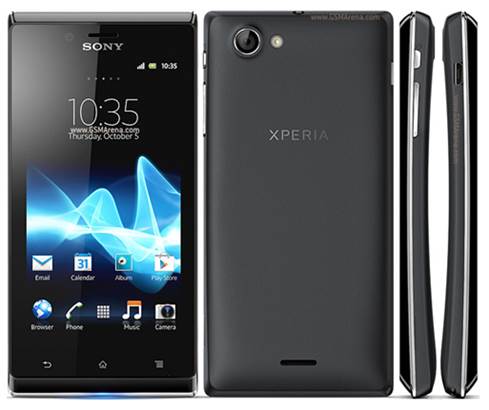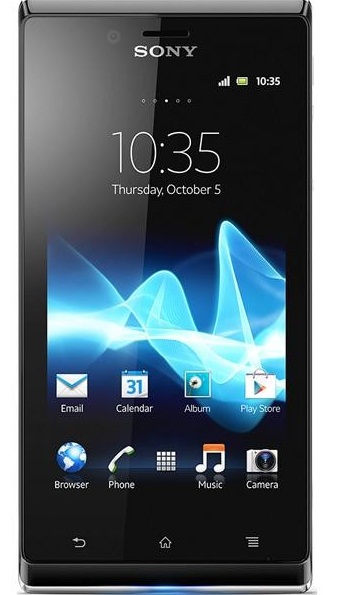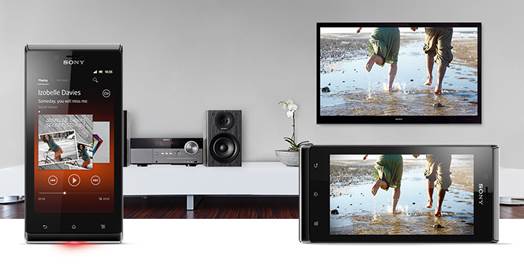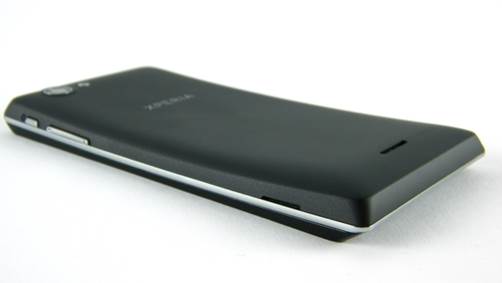Sony’s low rent Xperia T lookalike
lacks its bigger brother’s license to thrill
It’s a trick of trade as old as time: get
some attention with the top end model, then sell people whatever version of it
they can afford, with the luxury features stripped out. This is one of the more
banal we’ve seen in a while. At a glance, the Xperia J looks like a shrunken
Sony Xperia T, the phone you might have seen Daniel Craig using in the latest
Bond film. It sports much the same smudgy plastic design, with a curved back
that harks back to Sony’s pleasant Arc smartphones from last year.

Sony
Xperia J
Sadly, though, the Xperia J feels like a
Sony phone from three years ago. The capacitive buttons below the screen are a
clear sign of that: the menu key that Google dropped a year ago in favor of a
multi-tasking button is still alive and kicking on the Xperia J - if you want
to jump between apps you’ll have to long press on the home button, something
the search giant has tried to eliminate.

Sadly,
though, the Xperia J feels like a Sony phone from three years ago.
It’s where the similarities also end. Though
the four-inch 480x854 screen is a manageable size, and reasonably sharp, the
colors don’t exactly pop, and the 9.2mm depth isn’t thin. As a result, it’s not
much more manageable than a larger phone like the Xperia T or HTC One S.
It’s slower too. The measly single core
1GHz processor lags far behind its multi-core peers, and isn’t up to a good
deal of strain: don’t expect new 3D games down the line to work smoothly or at
all. While it usually runs smoothly enough in apps, it doesn’t benefit from
Android 4.1’s major “Project Butter” speed boost and its blazing fast
app-switching.
That’s right: the Xperia J runs 2011’s 4.0
Ice Cream Sandwich. Sony says an update is coming, but don’t hold your breath.
Sony’s take on Android here is sluggish,
and filled with redundant apps. Sony’s music and video services feel
particularly pointless now that both media are a crucial part of Google’s own
Play app store. And Sony’s Timescape widget, which pulls in your social network
feeds at a not particularly rapid pace, doesn’t provide the smart notifications
you now get from the Facebook and Twitter official apps.

Sony’s
music and video services feel particularly pointless now that both media are a
crucial part of Google’s own Play app store.
That low-power CPU is also the reason some
of the best software feature’s from the Xperia T don’t make the jump - the
Small Apps that work like widgets on a PC or Mac desktop haven’t made the cut
here.
The camera too is similarly dull: the five
megapixel sensor is spectacularly flat and washy, and worst of all, it can’t
even film in RD. Considering RD video has been floating around in mobile phone
for three years now, this one seems especially baffling. Why bother?
There’s a dirty secret that mobile
manufacturers don’t want you to know: it’s often the case that last year’s
flagship phones, hogging inventory space the networks badly need, are better
value than this year’s mid-range mobiles.

The Sony Xperia J’s a reasonably specced
phone for the money upfront, going around $225 SIM-free or on Pay As You Go
with a network. The cheapest deal we could find for Xpena J was $20.25 per
month with 02.
A quick Google and presto, we had a Samsung
Galaxy S2 for $22.5 per month with cash back. Both run Android 4.0: the Galaxy
S2 is faster, has a larger, better display and a better camera. Which would you
go for? Shop around: last year’s epic phones are still impressive today and
cheap too.
|
Specifications
§ Price:
$223.5, free with contracts starting from $20.25 per month
§ Dimensions
120.5 x 63 x 10.28 mm
§ OS
Windows Phone 8
§ Screen
4.0-inch S-LCD
§ Resolution
480x800
§ Processor
Qualcomm Snapdragon S4 1GHz dual-core
§ GPU
Adreno 305
§ RAM
512MB
§ Storage
4GB expandable via microSD
§ Cameras
5MP rear, LED flash I 720p HD video
§ Wireless
Wi-Fi, Bluetooth 3.1, a-GPS and GLONASS
§ Ports
Micro USB, 3.5mm audio
§ Battery
life 1,700mAh
|